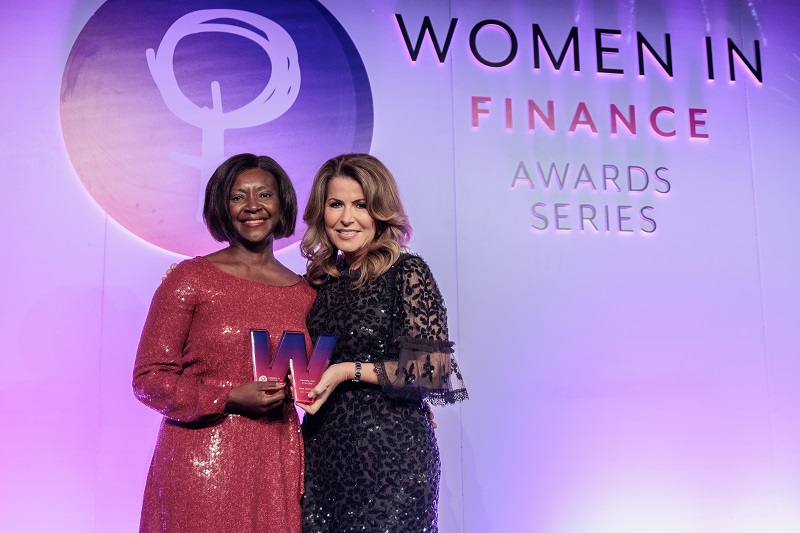Earlier this month, DiversityQ’s Editor Cheryl Cole moderated a roundtable featuring a number of female tech leaders whose organisations are nominated for the 2021 Women in IT Awards’ DEI Initiative of the Year.
Female tech leaders on D&I
The nominees include organisations or networks that have “undertaken a specific initiative to promote diversity, equity and inclusion within their organisation or the wider community.” Examples of initiatives include support for BAME and LGBT+ professionals, greater opportunities for disabled talent, dealing with the gender pay gap and better paternal leave policies.
Participants included: Gisella Famà, Experience Design Capability Lead, Human-Centred Design at KPMG; Tracey Thomas, Senior Project Manager, NHS Digital; Ellisse Johnston, Executive Lead to Head of FS Consulting, KPMG UK; Liz Jessop, Development Lead for IT’s Her Future and Co-Chair KPMG WorkAbility, KPMG UK; Tolulope Awe, Building Facilities Manager Lead, NHS Digital and Rav Bumbra, CEO of Diversity Consultancy Structur3dpeople and Founder of Cajigo.
Being an “agent of change”
Cole asked the participants what it meant to be “an agent of inclusive change” in the sector and what drives them. For example, one speaker said they entered the technology sector after working in the creative industries and hadn’t been aware of the available career opportunities and noted that more work had to be done to increase knowledge for women. They also said that stigma remained around the knowledge needed for a tech career and said there is more diversity of skill-sets than people think, including psychology and “the understanding of human nature,” as well as technical skills.
Cole then asked the speakers what it meant to show up as an agent of change. One said that as a woman of colour from her community, she was encouraged to look after her family and stay at home. However, after decades working in the tech sector, she became a role model “to show others what a career in technology looks like.” For her, being an agent of that change was taking her experience to schools and working with girls from underrepresented backgrounds to change their attitudes about their place in the tech industry. Another speaker said it was about being a “relatable role model,” which involved speaking up about issues in the industry she had experienced, including impostor syndrome, which she thought could help de-escalate the problem for women.
The tools for creating a great programme
Cole’s next question was what tools were necessary for delivering a successful diversity and inclusion programme. One speaker said that people were central to the project where “little things” employees can do daily can make a difference. They also said that after female representation grew in their company over five years, they realised that having “baseline data” was essential to showing “where we’ve succeeded, but more importantly to identify where we have not and direct the focus and attention there.”
Another speaker said that while diversity and inclusion initiatives can start as “passion projects” they need governance and be treated like any other work programme to increase its chances of success. The by-product of this, they added, is that “when people start to see success, they also start to want to participate as they can see they can make a difference.”
Listening to colleagues’ lived experiences also came up. One speaker involved with a BAME network said that having a platform where the lived experiences of BAME colleagues were heard was important. Central to this, they added, was having a “safe area” to challenge bullying or harassment. They also said that reverse mentorship was an essential way for “allies to hear about lived experiences and also to learn a lot about what we’re doing.”
Data collection – its potential and the issues to be aware of
The conversation turned to data collection and the issues involved. One speaker said that data tracking for employees with protected characteristics could be difficult if they’re very underrepresented, as lack of data makes tracking nearly impossible. They also said that tracking data on more nuanced topics like career progression could be difficult as it can be “held tightly” by HR.
Another speaker said that data had helped them “get into areas where there’s been scepticism” because it’s hard for people to deny statistics.
To help build up the female tech talent pipeline, another speaker suggested that data collection in schools could help identify what careers girls are considering and whether they know what tech employers are out there. They also said that taking a demographic approach could be useful to see what girls from minority backgrounds are thinking about careers in technology.
The power of engagement
This speaker also said they had started workshops to talk to school-age girls about tech careers where at the start, none wanted to work in tech or “sit on a board” in the future. Yet after the workshops, 90% wanted to work in the tech industry, including being a start-up founder, while 98% wanted to be a board member, which showed the impact of engaging with young women.
Cole asked the speakers about the biggest impact they’ve seen come from these initiatives. One said they’ve seen more “active engagement” from leadership who are now engaging in often difficult conversations that go beyond their everyday experiences.
The conversation ended with speakers discussing their “quick-wins” for a successful D&I initiative which they emphasised must form part of a sustainable effort over the long term to ensure real and effective change.
One speaker said that having role models that are multi-dimensional and non-tokenistic was key. This included role models that represent the different intersections of diverse identities who can show underrepresented colleagues a clear and realistic path to success. They also said that thinking carefully about who sits on the assessment panel for graduate and apprentice interviews was important.
Another said that turning diverse role models into mentors for young girls was key to share their stories. She added that people needed to hear the bad and good, including barriers to entry and workplace progression. They hoped this would one day build a talent pipeline of young women who will be more confident and enter senior positions far quicker than their predecessors.
To register for the Women in IT UK Summit on June 23rd, click here. The Women in IT Awards will follow on June 24th, to register please click here. To view the full shortlist of awards nominees, click here.









